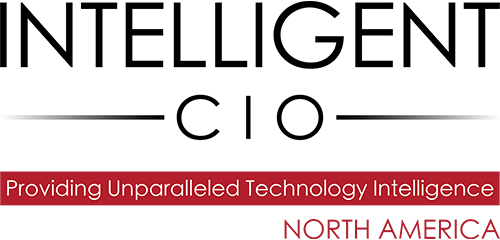Mark Bowen, Editor of Intelligent CIO North America, says the future of the cybersecurity industry, and therefore the long-term protection of business data, is reliant on an increasing number of role models inspiring the next generation of female data defenders.
Companies across the globe are constantly battling with the long-term question of how they can continue to stay one step ahead of the cybercriminals.
There’s no doubt that IT leaders constantly need to consider how they keep ahead of the cybercrime curve.

Sure, there are options out there to help – with attacks increasing in speed, agility and sophistication, businesses would be well advised to utilize Machine Learning and AI in an attempt to radically reduce their risk.
Attackers are getting into systems, taking data and demanding ransoms much quicker than previously and there is no doubt that automation will help with the volume of speed of detections.
Thankfully, in the days of reprehensible criminal activities such as Ransomware-as-a-Service, Machine Learning can support the often inadequate number of skilled employees a company has at their disposal.
But I can’t help feeling at some point that skills gap is going to become an absolute chasm and the cybersecurity of the vast majority of companies, and therefore the security of all of their critical data, is going to come under ever-escalating threat.
So what is the long term solution to ensuring the effective, long-term protection of everyone’s data?
As well as possessing a comprehensive understanding of an evolving threat landscape, an ability to be able to detect and respond to threats swiftly and successfully is a leading priority. Not surprisingly, this requires extra hands-on deck but where are these going to come from?
It’s a commonly accepted fact that women are under-represented in the IT and cybersecurity sectors. But what we don’t really know is what percentage of the cybersecurity workforce is made up of women.
There seems to be wide-ranging disagreement about this but most estimates seem to be that the cybersecurity industry workforce is made up of around 25% women.
But what we don’t know is what role women are performing within the industry – I’ve heard reports that this number could well be inflated by the number of women working within administration.
Even if we take the 25% figure to be accurate it’s clear that women are massively under-represented and the question is then what are we going to do about it?
I think we should ask ourselves if there are any grounds for optimism in terms of women being better represented in the cybersecurity industry.
Faith in change
I believe we need to have faith in the ability of society to change. It wasn’t until the mid-19th century that women were employed as teachers in the US but a shortage of males changed that although, unfortunately, they only received a third of the pay men got.
Although statistics vary, it seems safe to say that around 75% of US teachers are currently female but it’s worth pointing out that they still find themselves often overlooked for promotions and tend to make less than their male peers.
Invisible change
This type of change can be frustrating because it is incredibly difficult to detect and you see little evidence of it on a day-to-day basis but it happens steadily, often in the background and off-the-radar.
I could go on but my point is we have to have faith in the process of change – and the key to this is to alter people’s expectations which can translate to transformation in the real world.
Once we get to the stage where more women see cybersecurity as a viable career option, real change will surely follow.
Convincing parents
When we get to the stage where parents recognize that cybersecurity is an attractive career option for their daughters and encourage them to study it at university you can expect to see that change become rapid.
And why shouldn’t they? Cybercrime is the fastest growing type of crime globally. As a consequence, there has been enormous growth in the cybersecurity market so the opportunities are endless.
There are millions of unfulfilled cybersecurity jobs out there that are incredibly lucrative and obtainable – how many other sectors can you truly say that about?
Cybersecurity can’t cope without women
The truth is that the needs of businesses, and society in general, won’t be met unless more women pursue careers in cybersecurity.
A response needs to be formulated to encourage them to become part of the solution.
Their involvement – along with the diversity of thought it will add to the sector – can only strengthen the industry. Different approaches will help deter an enemy that continuously changes in an attempt to become profitable.
Media portrayals
It’s a depressing fact that the way certain professions are portrayed in the media can have a meaningful influence on the career selections young people make.
We have all heard jokes about how the cybersecurity industry – and IT in general – is full of comic book and science fiction geeks. But the reality is the cybersecurity field is much broader than most people give it credit for.
It’s true you need talented technicians to operate your cybersecurity team but the industry also needs gifted communicators who can explain the risks we all face and the prospective damage they can create.
There are many people employed in cybersecurity who did not previously see themselves working in that sector. Now they have successful careers and very lucrative ones too.
Girls Who Code
This is where organizations such as Girls Who Code have a key role to play. It’s important to point out that the girls, women and nonbinary individuals the organization helps are not necessarily going to end up in the cybersecurity sector but they are extremely likely to pursue an IT career.
With a mission to close the gender gap in technology and change the image of what a programmer looks like, Girls Who Code holds summer, college and career programs as well as free after-school clubs to provide a supportive environment to help members build on their coding skills and complete projects.
Since 2012 its programs have served 500,000 individuals across the US and around the world.
The organization believes it can close the gender gap in new entry-level tech jobs by 2030 and half of the girls it has served come from historically under-represented groups. This includes girls who are Black, Latinx and from low-income households.
Perhaps the most telling statistic is that its alumni are choosing to major in computer science, or related fields, at a rate seven times the national average.
Other organizations
Their work is backed up by organizations such as the Girl Scouts of the USA issuing cybersecurity and STEM badges and the United States National Security Agency running its GenCyber program to spark interest in cybersecurity in young people.
This involves running summer camps to equip young students with the skills they need to better prepare for a career in the fast-changing field of cybersecurity. And to ensure a level playing field, GenCyber camps are open to all student and teacher participants for free.
Replacing alienation
There’s an expression that ‘you can’t be, what you can’t see’ meaning that you can’t follow in someone’s footpath if you are blissfully unaware of their career trajectory.
This is undoubtedly true and underlines the need for more, strong female role models.
The current dearth of these, means many of the young women starting out on their careers are themselves opting out of a technical career before they even begin.
If those women currently filling C-level positions in the IT and cybersecurity sectors, can enhance their visibility and inspire the next generation they can guarantee that the future of the industry is indeed female.
Click below to share this article

